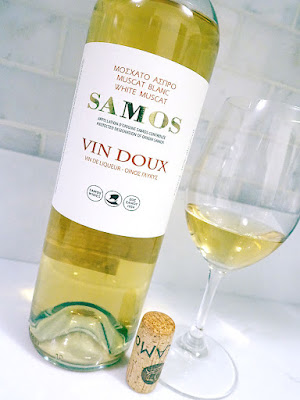wine review is an excellent fortified wine from Portugal that is brand new to the LCBO, arriving on shelves as part of the recent LCBO VINTAGES New Release Collection.
This fortified wine is produced by Venâncio Costa Lima, a winery that was established in 1914 in the small village of Quinta do Anjo, within the district of Setúbal. The man behind this winery was Venâncio da Costa Lima, who was born in the town of Quinta do Anjo in 1892. He was raised by his aunt and uncle on their farm, because his mother passed away when he was very young. His father was a butcher, so Venâncio’s first job was as a livestock tradesman for the region's butcheries.
With an entrepreneurial spirit, Venâncio diversified his business and began trading in agricultural products. The winery, which he named after himself, was focused on selling wine, olive oil, and grain, and eventually began specializing in wine production and sales. For over two decades, between the 1930s and 1950s, Casa Agrícola Venâncio da Costa Lima was the second-largest wine producer in the region. Venâncio was highly recognized and esteemed in the region over his lifetime by being a Council Member of the Setúbal Municipality and the Mayor of Palmela, among his many roles. Venâncio was so highly regarded that when he passed away on November 1st 1956, at the age of 64, the town of Quinta do Anjo cancelled their scheduled local celebrations, and instead had a day of mourning. Venâncio did not have any children. Thus, the winery was bequeathed to his six nieces and nephews, who continued to master their craft and specialize in making Moscatel, red, and white wines.
Today, Venâncio Costa Lima is one of the oldest wineries in the Palmela region and continues to be a family wine business, with the fourth generation also now contributing. The goal at Venâncio da Costa Lima is to produce wines that are current and modern, while also exhibiting characteristics of the region. The family is always striving to perfect the art of winemaking, while constantly modernizing their use of technology, in order for the quality of their wines to improve and evolve. With accolades in-hand, Venâncio Costa Lima is considered to be one of the top producers of Setúbal Moscatel wines.
This vintage fortified wine is crafted using the Moscatel varietal (also known as Alexandria) that was grown in the Setúbal Municipality on the Península de Setúbal, in south-central Portugal. The grapes were grown on clay-limestone soil and influenced by the maritime climate. To vinify this wine, traditional winemaking methods were used - a short fermentation in contact with skins, followed by an interruption of the fermentation by adding quality grape alcohol to fortify the wine. It then undergoes 5–6 months of maceration, which allows for the full extraction of aromas and flavours. It was matured for two years in vats prior to bottling. Let's see how this 2021 Moscatel de Setúbal from Portugal is tasting tonight...
The bright nose of medium-high intensity is fragrant and open, with a lovely mélange of orange peel, floral, and bitters, plus some honeyed undertones. The medium-full bodied palate is pleasantly sweet with very good concentration, and lovely orange peel, caramel, floral, and bitter flavours, plus tangy citrus, honey, mineral, and spice notes adding complexity. It's got a nice, textural mouthfeel, along with crisp, well-balanced acidity. There's some palate warmth, but still within balance, while the flavours are more minerally on the mid-palate and continues through to the long, dry, and savoury finish. Chill and enjoy on its own, or pair with a caramel-based dessert, butter tart, or drizzle over vanilla ice cream. Highly recommended buy! Score: 91 pts
Other lovely wines by Venâncio Costa Lima can be ordered through their Agent - Eurovintage Wines & Spirits.
This fortified wine is produced by Venâncio Costa Lima, a winery that was established in 1914 in the small village of Quinta do Anjo, within the district of Setúbal. The man behind this winery was Venâncio da Costa Lima, who was born in the town of Quinta do Anjo in 1892. He was raised by his aunt and uncle on their farm, because his mother passed away when he was very young. His father was a butcher, so Venâncio’s first job was as a livestock tradesman for the region's butcheries.
With an entrepreneurial spirit, Venâncio diversified his business and began trading in agricultural products. The winery, which he named after himself, was focused on selling wine, olive oil, and grain, and eventually began specializing in wine production and sales. For over two decades, between the 1930s and 1950s, Casa Agrícola Venâncio da Costa Lima was the second-largest wine producer in the region. Venâncio was highly recognized and esteemed in the region over his lifetime by being a Council Member of the Setúbal Municipality and the Mayor of Palmela, among his many roles. Venâncio was so highly regarded that when he passed away on November 1st 1956, at the age of 64, the town of Quinta do Anjo cancelled their scheduled local celebrations, and instead had a day of mourning. Venâncio did not have any children. Thus, the winery was bequeathed to his six nieces and nephews, who continued to master their craft and specialize in making Moscatel, red, and white wines.
Today, Venâncio Costa Lima is one of the oldest wineries in the Palmela region and continues to be a family wine business, with the fourth generation also now contributing. The goal at Venâncio da Costa Lima is to produce wines that are current and modern, while also exhibiting characteristics of the region. The family is always striving to perfect the art of winemaking, while constantly modernizing their use of technology, in order for the quality of their wines to improve and evolve. With accolades in-hand, Venâncio Costa Lima is considered to be one of the top producers of Setúbal Moscatel wines.
This vintage fortified wine is crafted using the Moscatel varietal (also known as Alexandria) that was grown in the Setúbal Municipality on the Península de Setúbal, in south-central Portugal. The grapes were grown on clay-limestone soil and influenced by the maritime climate. To vinify this wine, traditional winemaking methods were used - a short fermentation in contact with skins, followed by an interruption of the fermentation by adding quality grape alcohol to fortify the wine. It then undergoes 5–6 months of maceration, which allows for the full extraction of aromas and flavours. It was matured for two years in vats prior to bottling. Let's see how this 2021 Moscatel de Setúbal from Portugal is tasting tonight...
Tasting Note:
VENÂNCIO COSTA LIMA MOSCATEL DE SETÚBAL 2021 - DOC, Portugal (#42991) (S) - $18.95The bright nose of medium-high intensity is fragrant and open, with a lovely mélange of orange peel, floral, and bitters, plus some honeyed undertones. The medium-full bodied palate is pleasantly sweet with very good concentration, and lovely orange peel, caramel, floral, and bitter flavours, plus tangy citrus, honey, mineral, and spice notes adding complexity. It's got a nice, textural mouthfeel, along with crisp, well-balanced acidity. There's some palate warmth, but still within balance, while the flavours are more minerally on the mid-palate and continues through to the long, dry, and savoury finish. Chill and enjoy on its own, or pair with a caramel-based dessert, butter tart, or drizzle over vanilla ice cream. Highly recommended buy! Score: 91 pts
Other lovely wines by Venâncio Costa Lima can be ordered through their Agent - Eurovintage Wines & Spirits.

















